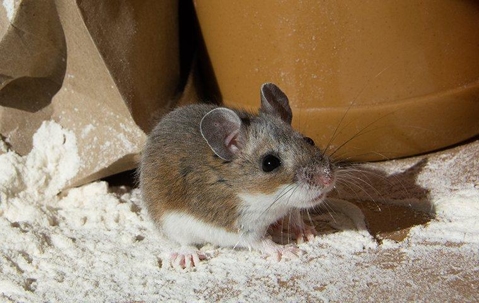When we think of rodents, we often think of mice and rats. In fact, the term “rodents” is often synonymous with these two types of home-invading rodents. But there are a lot of other rodents in the world. In fact, the group of mammals known as Rodentia make up the majority of mammal species. Of the 4,000 species of living mammals, 1,500 of them are rodents! Some rodents you may have heard of include hamsters, squirrels, chipmunks, prairie dogs, voles, woodchucks, porcupines, and beavers. Fortunately, we don’t have to deal with too many hamster or beaver infestations in our homes. The rodents we battle inside our homes are usually the two most common ones: mice and rats. But, even within these two types of rodents, there is some variance.
Not all mice are created equal. If you are dealing with an infestation of house mice, you’re going to have a lot more problems than if you were dealing with deer mice. Deer mice don’t like living with us as much as house mice do and are more at home in rural areas where animals roam around in yards and open fields. These larger mice can commonly be found in barns, sheds, and outbuildings while house mice are typically found invading wall voids, pantries, and kitchens. But, deer mice infestations have a downside. However, deer mice do have the potential to invade homes. And while both species of mice are dangerous to have around, deer mice are more likely to transmit hantavirus, which can lead to Hantavirus Pulmonary Syndrome (HPS). If you discover deer mouse nests in your home, be extremely cautious. Disturbing them can cause contaminants to be released into the air which can cause you and your family members to become very ill.
Two Most Common Species Of Rats
When it comes to rats, there are two types of rats that stand head and shoulders above the rest. Both of these rats can live permanently inside man-made structures, but one is more prone to do it than the other. This has earned it the name house rat.
Roof Rats
The house rat, most commonly called a roof rat, is known by many names. These rodents have been called black rats, ship rats, and more. Scientifically, they are known at Mus Rattus. If these large rodents try to get into your home, you can expect them to enter from a high location such as your roof, hence their name. While this is not always the case, it usually is. Roof rats are great climbers and can easily scale a tree and jump down onto your roof; once they have access to your roof, these rats can chew their way into many points of vulnerability to gain access to your attic and eventually the rest of your home.
Norway Rats
Norway rats, also known as brown rats, sewer rats, water rats, wharf rats, and gray rats, aren’t as much of a household pest as roof rats. These rats, known scientifically as Rattus norvegicus, prefer to live in and around our yards and burrow into the ground. They usually do this underneath a pile of objects that are near a food source of some kind. The most famous of all Norway rats is Templeton from the popular story Charlotte’s Web. If you’re familiar with this story, you should already have quite a bit of insight into how these brown rats behave. They do quite well on farms and have a preference for yards that have gardens, fruit trees, animal feed, trash, and other easy-to-access food sources.
Rodent Threats
When any of these rodents come into your yard, they can bring fleas, ticks, lice, mites, and other parasites with them. They can damage garden vegetables, ornamental plants, berry bushes, and feed on fruit. These rats also feed on carrion and climb into trash cans to find meals which makes them a mechanical vector for harmful bacteria when they get into your food-storage areas. They damage building materials and can sever live wires, leading to a house fire. In addition, when these rats get into a home, they leave their feces and urine everywhere they go; they even leave their waste products where they sleep! These rats are dirty house guests, in every possible way and are certainly not a pest you want to have taking up residence in your home.
Schedule Rodent Control Services Today
If you’re seeing rodents on your property or, worse, inside your home, don’t wait until they’re making everyone in your home become sick or damaging your home. Rodents can be managed with ongoing pest control service. In fact, rodent monitoring and control is built right into our basic pest control service, Advantage PLUS+. And, with Advantage PLUS+, we don’t just keep rodents out of your home. This service also works to resist over 16 other common Texas pests, including scorpions and brown recluse spiders. At Innovative Pest Control, we’re ready to help meet all your pest control needs. To learn more about our rodent control services or other pest control options, contact us today!
Categories:
- Rodent Control
The post Common Rodents In East Texas appeared first on Innovative Pest Control.

